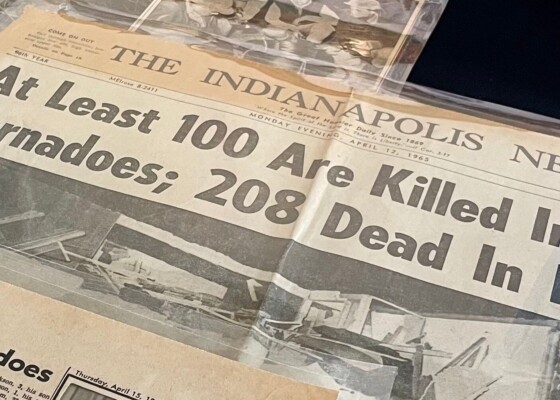Frankenfun at the Weekend Retreat
March 28, 2018This past weekend we had our Frankenstein Weekend Retreat as part of One State / One Story: Frankenstein at DePauw University’s Prindle Institute for Ethics. Attendees were immersed into the…
This past weekend we had our Frankenstein Weekend Retreat as part of One State / One Story: Frankenstein at DePauw University’s Prindle Institute for Ethics. Attendees were immersed into the sounds, smells, sights, and tastes of the novel, as we interacted with four scholarly talks, ate meals inspired by the Genevan setting of the book, listened to a curated playlist of music and engaged in dialogue with book lovers from across the state.
The Indiana Humanities staff had a little too much fun planning for this event, so in case you missed it, we thought we’d share the menu and some of our favorite little details from the weekend.
DECOR
We decorated the beautiful Prindle Institute with Swiss inspiration and Frankenstein flair, which included but was not limited to flags, flowers, different editions of the book, designed menus and lots of Frankenstein swag.
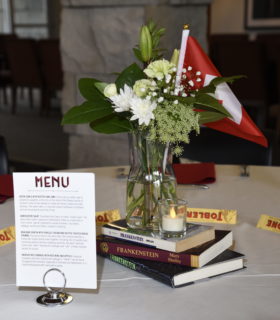
WEATHER
In an unexpected turn of events that seemed both ill-fated but delightfully appropriate, we experienced a fluke end-of-March Indiana snowstorm, which, though beyond our control, certainly benefited the overall atmospheric effect of the weekend. We were reminded of Robert Walton sailing to the North Pole and the creature trying to keep warm in the snowy Swiss Alps.
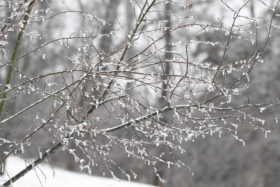
MENU
We included descriptions on the table menus to share our inspiration for each food selection and how that dish or beverage ties into the larger plot or setting of Frankenstein. These descriptions are shared below.
1. SNACKS
Lingonberry Jam Drop Cookies: The lingonberry is native to the wide expanse of the northern hemisphere, especially in the arctic and alpine tundra of Europe. When the creature scavenges for food in the Alps, he eats berries and even tries to roast them on the fire.
Frankenstein Finger Almond Cookies: It’s the mark of the creature’s fingers that is left behind on the neck of each of his victims. Sure, that’s pretty creepy, but you should still take a cookie!
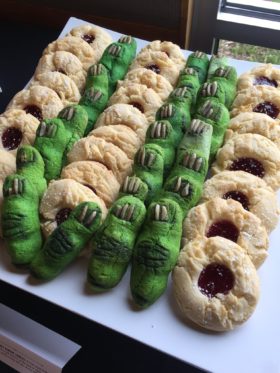
Frankenstein Sugar Cookies: Have a sugar cookie to remind you that, sure, the creature is salty, but he’s also sweet too!

2. APPETIZERS
Blood of Frankenstein Roasted Beets with Blue Cheese Mousse and Port Reduction: We apologize for the gory inspiration of this dish, but you did opt to come to a Frankenstein-themed weekend, after all. Blood aside, enjoy!
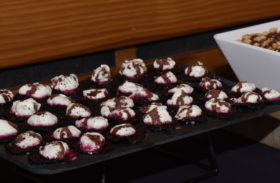
A Selection of Whole Nuts, European Cheese, and Crostini with Lingonberry Jam: This sampling is reminiscent of the local breakfast the monster sees placed on the windows of the cottages in the Swiss Alps when he first searches for food and shelter. Bread, cheese, milk, wine…now, that’s breakfast!
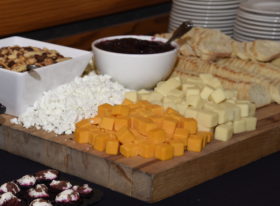
Swedish Meatballs: Traditionally served at Swedish smörgåsbord and widely available at any IKEA near you, the Swedish meatball has been the country’s signature dish since King Charles XII introduced it in the early eighteenth century. While there is no record of the creature consuming meatballs in Shelley’s text, we don’t think it’s too far outside the realm of possibility. Meatballs are pretty good.
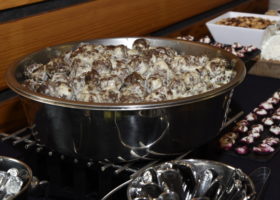
Electric Asparagus Shooters with Lump Crab and Extra Virgin Olive Oil: It’s alive! The inspiration for this appetizer is twofold: One, it’s green. Two, it’s a perfect combination of parts. Just like the creature!
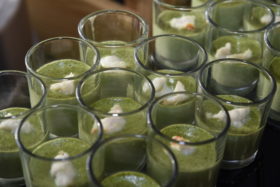
3. DINNER
Oaten Cakes with Butter and Jams: Victor eats an oaten cake to satiate his appetite as he sits on the shore of the Orkney Islands of Scotland. Here he has worked to create the female creature he later destroys. The oaten cake is a versatile staple traditional to Scotland and can be served at any time of day.
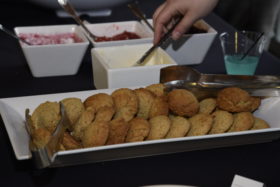
Gemischter Salat: Translated from Swiss to mean “mixed salad,” the gemischter salat is popular in Switzerland, either as a side dish or main course. Typical ingredients include tomatoes, cucumbers, cabbage, carrots and beets, drizzled in dressing.
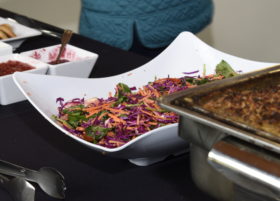
Kohlrabi Gratin with Parsley Cream and Butter Toasted Bread Crumbs: During his time in the Swiss Alps, the creature watches a family who enjoys simple family meals together, including one of roasted roots. Commonly eaten in German speaking countries, the word “kohlrabi” comes from “kohl” (German for cabbage) and “rabi” (a Swiss German variant for turnip).
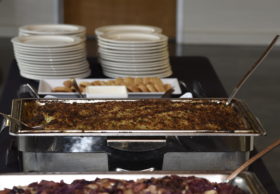
Braised Red Cabbage with Red Wine and Apples: A popular European side dish, braised red cabbage or “rotkohl” can be found throughout the continent, especially in Germany and Switzerland. It is traditionally paired with roast pork or goose.

Sliced Leg of Lamb with Roasted Artichokes, Red Currants, and Shallots: While the creature at one point remarks that he will not “destroy the lamb to glut his appetite” but rather that “acorns and berries afford [him] sufficient nourishment,” we thought we’d opt for something a little heartier for dinner.
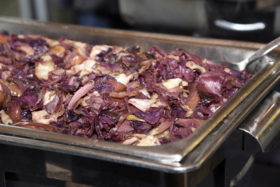
Mincemeat Pie: A staple of British cuisine since the twelfth century, the mincemeat pie is popular throughout Europe. Perhaps Victor and Henry enjoy some of the common dish during their winter together in London and Oxford.
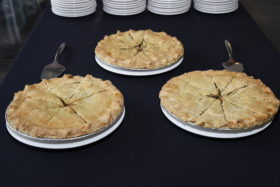
Toblerone Chocolate: The Toblerone candy bar was created in 1908 by Theodor Tobler in Bern, Switzerland. Its triangular shape is inspired by the Swiss Alps, and its delicious chocolate mixture includes nougat, almonds and honey.
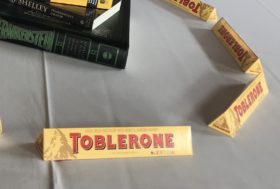
4. LUNCH
Raw Vegetable Salad with Fruits and Nuts: This recipe seems like it could come straight from the creature himself. During his time in the Swiss Alps, he gathers all kinds of fruits, nuts and veggies to fill his appetite, though our salad doesn’t have any acorns in it.
Herring, Walnut, and Egg Quiche: Native to the waters of the Atlantic Ocean and seas of the northern hemisphere, the herring has long been a staple in European cuisine. Perhaps Robert Walton spears a few on his voyage to the North Pole.
Local Oxtail Stew with Crusty Bread: This hearty stew brings to mind the warmth and comfort of blind man’s family cottage in the Alps. The creature looks in at their meal and yearns to be part of their hearth and home.
Roasted Chicken with Orange, Thyme, and Plum: Roasting meats with spices and fruits is a typically English cooking practice, dating back to medieval times. Victor Frankenstein and Henry Clerval spend time together in England during a portion of the book. Though Victor is busy sulking during much of their time there, he must at least take some time to eat.
Bakery Fresh Bread: “I discovered the names that were given to some of the most familiar objects of discourse; I learned and applied the words, fire, milk, bread and wood.” Among the creature’s first four words is “bread.” His priorities are clearly in check.
Rice Almond Pudding: Also known as “risalamande” or “ris à la malta” or “riskrem” depending on the country, rice almond pudding is a traditional European dessert popular in Denmark, Sweden and Norway.
5. RECEPTION
Cheese & Chocolate Fondue Spread: When it comes to cuisine, there is nothing more Swiss than fondue. Not only is it delicious—it’s communal! Fun fact, the earliest known recipe for cheese fondue is from a 1699 book published in Zurich.
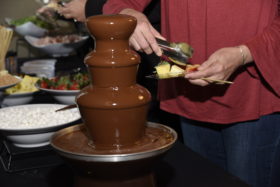
6. BEVERAGES
Signature Drink – Electric Lemonade: This drink mixes together vodka, Blue Curaçao and lemonade for an electrifying combination worthy of Dr. Frankenstein’s laboratory.

Beer – Ayinger Pilsner: Brewed in the hills of Bavaria, this beer might bring to mind images of Victor Frankenstein’s college days in Ingolstadt…
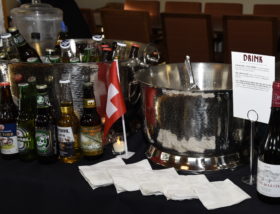
Wine – Trimbach Riesling, Francois Labet Pinot Noir, Guy Saget la Petit Perriere Vouvray, Chateau de la Chaize Brouilly: When in Geneva…! We’ve imported lots of delicious European wine for this event. Enjoy selections from different regions of France and Italy.
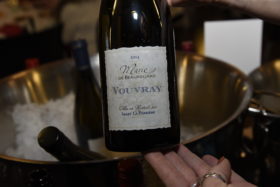
STYLE & SWAG
The weekend was also full of Frankenstein swag–some supplied by us, some brought by the attendees themselves. Be sure to visit our online Frankenshop to purchase some of these items. Our favorites from the weekend include:
Buttons
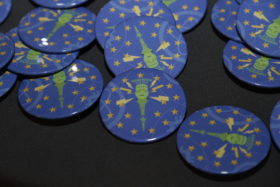
This hand-knit hat

The MIT Press Edition of the book and supplementary materials
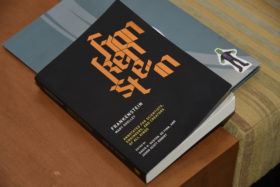
This one-of-a-kind jacket
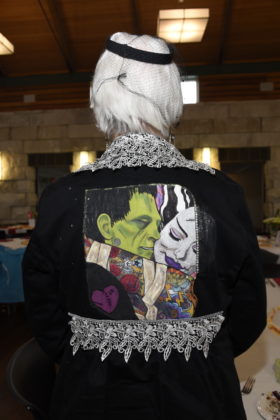
Our Frankenstein tote bag and t-shirt
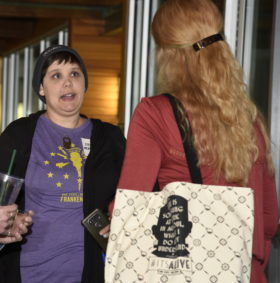
One State / One Story: Frankenstein is an Indiana Humanities program and has been made possible in part by a major grant from the National Endowment for the Humanities and in partnership with the Indiana State Library and Indiana Center for the Book. Any views, findings, conclusions, or recommendations expressed in this program do not necessarily represent those of the National Endowment for the Humanities.

